Croatian cuisine is diverse and offers the freshest products in its regional dishes, and menus vary accordingly by season and region. Which gives locals plenty of reason to celebrate. And there is nothing Croats love better than to celebrate with food festivals. Continuing the TCN series, 25 Things to Know about Croatia, on June 30, 2016, met the wonderful world of Croatian food festivals. If it grows, it is celebrated...

1 Edible Dormouse Festival - Puhijada (Dol, Hvar)
Yes, I didn't quite believe it either until I saw it with my own eyes, and then reluctantly tasted it, but one of the most popular festivals on Croatia's premier island of Hvar is the edible dormouse. The dormouse is hunted and makes up part of the cuisine in just three places in Croatia. The villages of Dol on both Hvar and Brac, where grilled dormouse is the preparation technique of choice, and further north in Gorski Kotar, where dormouse stew is the local delicacy.
The Puhijada festival is now in its 8th year, a chance to celebrate the traditions and heritage of the inland village. Organised by local NGO Tartajun, the dormouse eating takes place on the final night of the week-long festival which includes a range of activities and exhbitions for all ages. Check out the video of a Puhijada in years gone by blow. If you would like to try dormouse on Hvar, there are only a few restaurants which serve it (Me and mrs Jones in Jelsa is one), but it must be ordered at least 24 hours in advance. The festival even has its own currency - the Superpuh ('puh' means dormouse), which has a fixed exchange rate of 1 superpuh converting to 7 kuna. This year's festival takes place in August - the full programme is here.

2 Peskafondo Squid Fishing (Hvar Town)
There is always much discussion about extending the season, and there are various initiatives to so, including the Croatian National Tourist Board project, Croatia 365. These initiatives include private activities as well, and one of the most successful in recent years has been the squid-fishing championship in Hvar Town called Peskafondo, with main organiser and host the exclusive fish restaurant, Gariful. Teams set out in small boats for two days to test their squid-fishing skills, with the daily catch then ceremoniously weighed, and winners decorated. There are various concerts and events throughout the festival, and Peskafondo has become a popular way for locals to relax after another bumper season, while the festival itself is attracting an increasing international set of competitors. Check out the Peskafondo festival in the video below.

3 Lavender Festival (Velo Grablje, Hvar)
There are no prizes for guess which is the most aromatic festival in Croatia each year. The place to head in late June is the small village of Velo Grablje outside Hvar Town, once the centre of lavender production for all Dalmatia until the village fell on hard times ecomonically, and the population dropped to just five people until very recently. A group of motivated young people descended from the village decided to do something about that and formed an NGO called Pjover. They set about restoring a little pride and tradition into Velo Grablje, including the idea of having a lavender festival, which became an instant him. Lavender products (ever had lavender ice cream or lavender bread and butter pudding?) exhibitions, lavender products for sale, demonstrations of the traditional way of life from bread baking to dry stone walling, and perhaps the most interesting event of all - the distilling of lavender oil from the freshly harvested crop. If you are lucky, you may be invited into the metal vat to jump up and down on the lavender bundles to compress them, thereby ensuring sweet smelling feet for days. The festival typically takes place in the last week of June, when the lavender is in bloom.

4 Grahijada Bean Festival (Beli Manastir)
From lavender on Hvar in June to beans in Baranja in north-eastern Croatia, where the humble bean is celebrated each year. Starting off with the cooking of beans is large clay pots, and continuing with the World Championships of carp preparation and the 14th World Championships of bean preparation for locals of the town and surruonding villages, there is plenty of bean action to be had. A great family day out, there are plenty of games and activities for the little ones, before the winners are announced in the evening before the day is rounded off with a live concert. And there are no prizes for guessing what is on the menu for dinner.
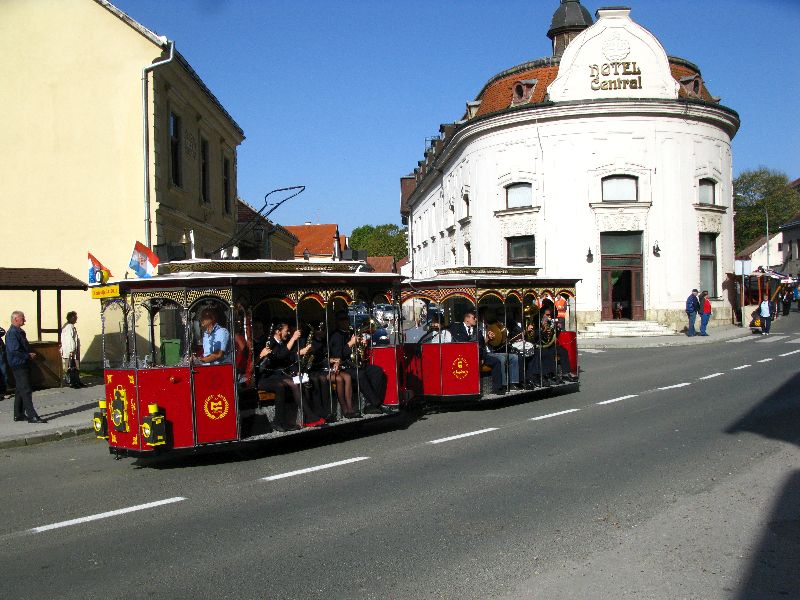
5 Kestenijada Chestnut (Hrvatska Kostajnica)
Nothing symbolises the Croatian love of their seasonal produce more than the Kestenijada Chestnut festival in Hrvatska Kostajnica, where an incredible 40,000 visit the festival over three days. A wonderful autumn family festival which this year will take place from October 7-9 attracts many family visitors from Zagreb and abroad, with a great natural programme arranged along the River Una and in the chestnut forests nearby. There is a tourist train ride, boat trips down the river and walking trails in the forest, all combined with exhibitions, concerts adn the reassuringly warm aroma of roasted chestnuts.
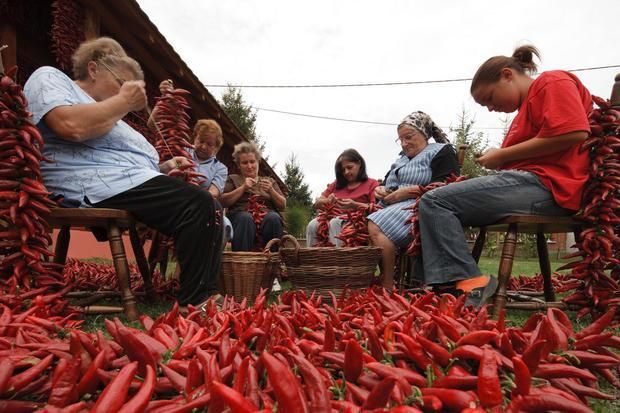
6 Paprika Festival (Lug, Baranja)
With its proximity to the Hungarian border and rich cultural and gourmet influence from its northern neighbour, the cuisine of Baranja is very distinctive, and a lot different to Croatian cuisine elsewhere. One common ingredient to spice things up a little is paprika, and the village of Lug hosts its very own festival each October to celebrate this essential ingredient in Baranja cuisine. The programme includes kids games, cultural presentations, the search for the best paprika, a football tournament and an autumn 'fishijada' - a feast of river fish prepared with - you guessed it - paprika.
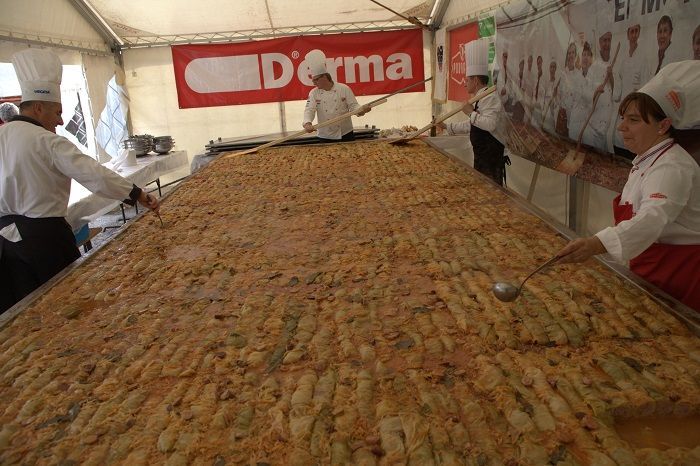
7 Zeljarijada Cabbage Festival (Vidovec, Varazdin County)
If cabbage is your thing, there is only one place to be in Septmeber - Vidovec near Varadzin, which since 1997 has been holding its very own Zeljarijada cabbage festival. Varazdin cabbage is famous and is culturally protected, with just one woman licenced to sell the special cabbage seeds which give the region's cabbage its reputation. Having attended the Zeljarijada a couple of years ago, I can confess that I never knew there were so many things one could do with cabbage, and I came home with presents for all the family. The centrepiece on that occasion was the large sarma in the world (a wonderful winter dish of cabbage leaves stuffed with mince), which took days to prepare, all 1.4 kilometres of it.
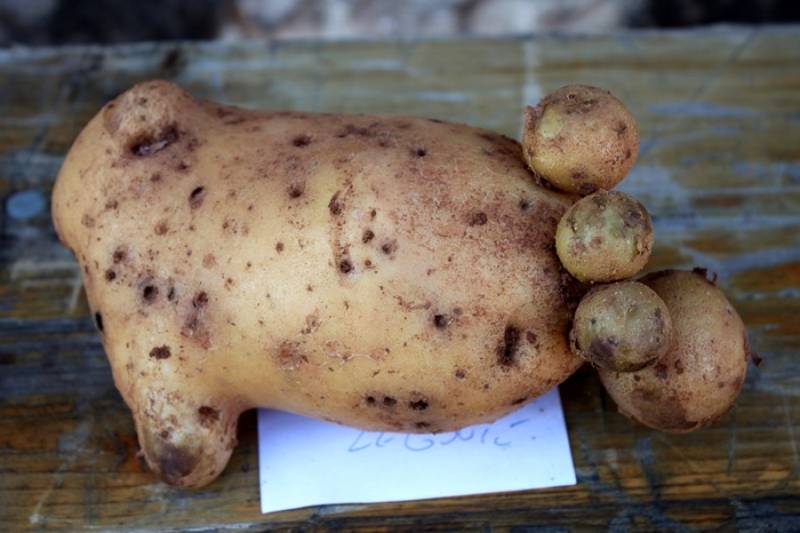
8 Gramperijada Potato Festival (Kastelir, Porec)
And what would Croatian cuisine be without the humble potato? Or even the oversized potato? Such things are worth celebrating in Kastelir, near Porec each June. Now in it 10th year, the Kastelir Gramperijada (as I understand it, gramper is a local word for an oversized potato. The only place in the world I have heard of a potato peeling competition, there are prizes for the heaviest potato grows, a range of cultural events, and of course, potato dishes aplenty.
{youtube}jDxcxwstlSc{/jDxcxwstlSc}
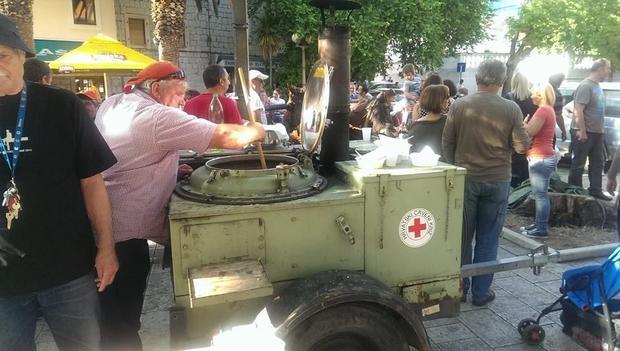
9 Fava Bean Festival (Kastela)
Ever tried fava bean ice cream? Surely one of the most surreal of the recipes concocted at Croatia's weird and wonderful food festivals, but it really does exist, at the annual Kastela Fava Bean Festival. Last year's event attracted more than 30 entrants, preparing traditional and somewhat less than traditional bean dishes, including a bean cake made by a team from Poland. Dishes ranged from local favourites such as bean stew with cuttlefish to the somewhat more exotic bean flan, crepes and strudel. The festival typically takes place in June.
{youtube}Lp-c8Sz7jmc{/youtube}

10 Bucijada Pumpkin Festival (Ivanic Grad, Zagreb County)
Keeping with the ice cream theme, have you ever tried vanilla ice cream with pumpkin oil? Not as gross as it sounds, and actually rather delicious, and you will find it on the menu of even some of the better restaurants in Varazdin County, for example.
The pumpkin capital of Croatia in Ivanic Grad, and on the third weekend of October, the town comes alive with a wonderfully inventive pumpkin manifestation. There are fine dishes of pumpkin, original souvenirs, concerts and competitions, including a childrens play, and if you look carefully, you may find Cindarella's pumpkin carriage.
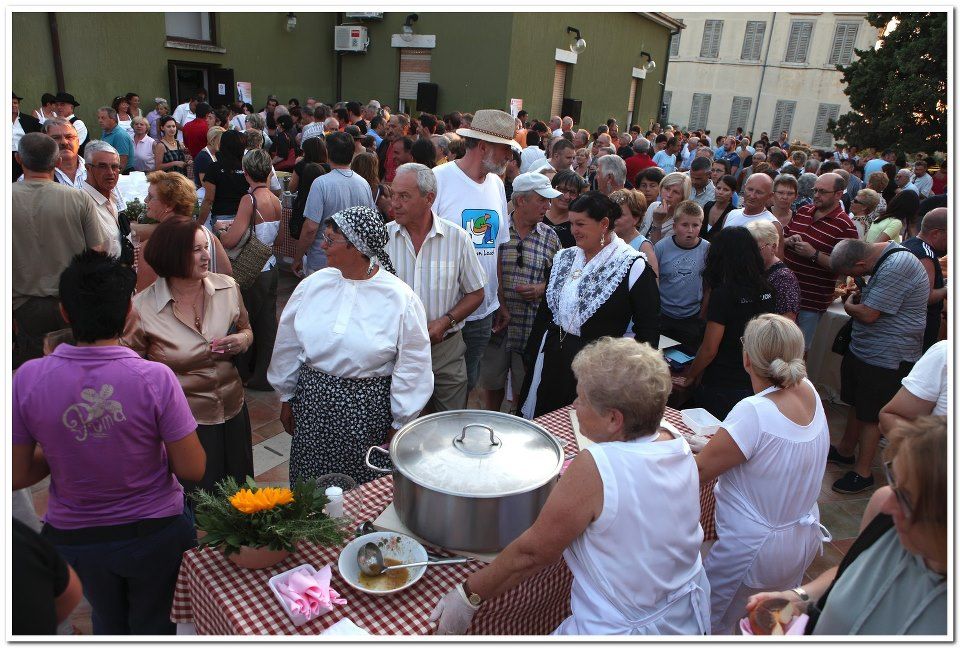
11 Snail Festival (Galizana)
Many people consider Istria to be the gourmet capital of Croatia, so it is perhaps not surprising that there is a festival for snails. In the eloquent words of the Vodnjan Tourist Board:
Every year in mid-August (15th of August) there is a traditional festival of the snail, where you can taste various snail specialties. Nowadays, traditional preparation of snails is attributed to the locals of Vodnjan and Galižana which are Italian descents. Due to the highly prized meat snails dishes are considered a delicacy. Snails are collected in local meadows and prepared according to traditional recipes, usually with polenta.

12 Walnut (Orehovica, Međimurje)
Where else to hold a walnut festival than in the town that is named after it (Oreh is walnut in Croatian)? "Orehijada" is an event that was first held in late April 2014, and the goal is to maintain the tradition of the walnut at the regional level. The coat of arms and flag of the Municipality of Orehovica has, as a symbol, the fruit of the walnut tree, which is linked to the history of the municipality. The walnut festival includes a cultural program - International festival of folklore ensembles, presentation and selection of the best Orehovci (indigenous walnut rakija, presentation and selection of the best walnut cakes, presentation of furniture and wood artefacts from walnut, resentation of other products of local farmer, not necessarily related to nuts (pumpkin seed oil, honey, cheese ...), a sales exhibition of walnut seedlings, and a resentation of the organisations dealing with the production of handicrafts.
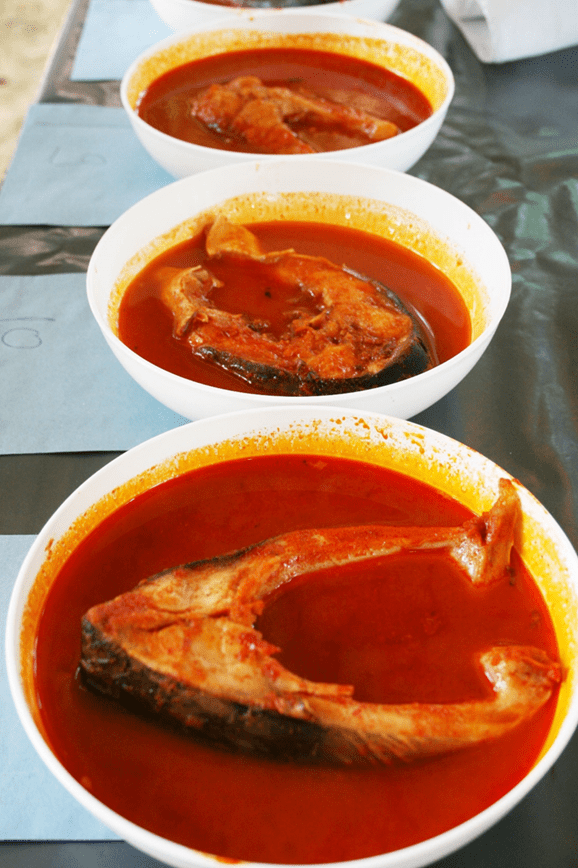
13 Fisijada Fish (Pozega)
While Croatia's most famous fishing traditions may be on the Adriatic coast, in continental Croatia, there is a much different focus for the catch of the day - river fish. The annual Fisijada in Pozega takes place in the Slavonian town in the first week of September, bringing together the catch of the region's best fishermen with some of its best recipes. A wonderful family day out in the park.
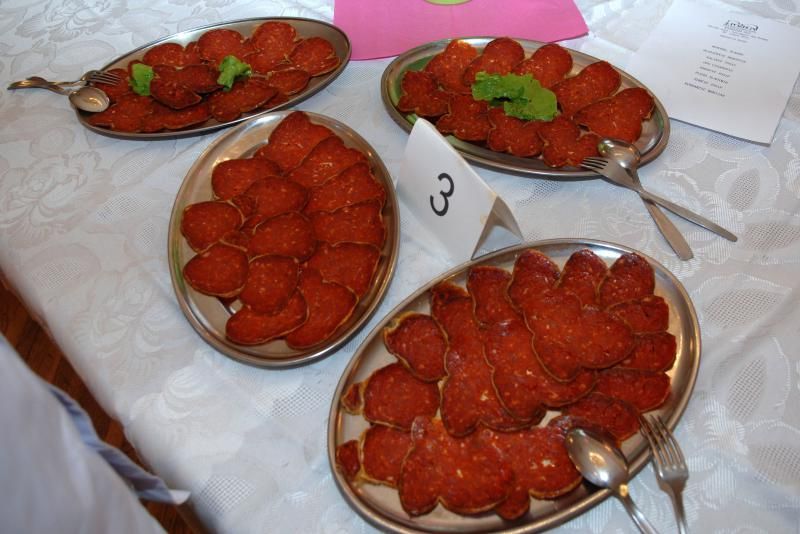
14 Kulenijada Kulen (Pozega)
Slavonia is sausage heaven, and no product is more highly prized than the spicy kulen sausage, one of the great symbols of regional Croatian cuisine. Don't leave Slavonia without it if you are looking for the ideal gift to impress your Croatian friends in other regions. A special event is held every une dedicated to the presentation and tasting of the very best kulen, served with quality local wines. As you can see from the video below, the kulen does not last long...
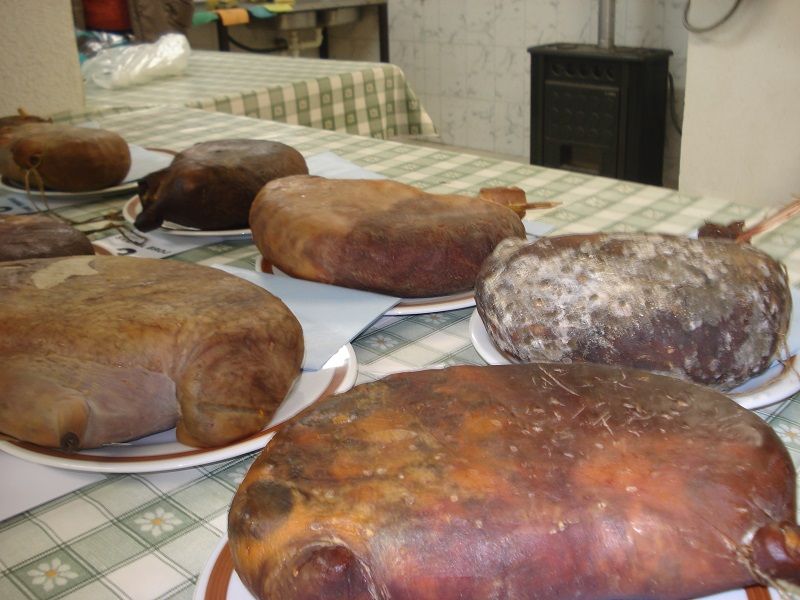
15 Svarglijada (Pozega)
Švargli, prezvuršt, tlačenica is a gastro dish, a type of meat dish made after "kolinje" in rural Croatia. Many villages have their own types of švargli, or prezvuršt, but in general its a combination of different parts of pig put in cleaned pig stomach, pressed. dried and cured for up to 20 days before serving. It is just cooked beforehand, then left out to get dry, smoked and cured. Švargli are eaten like sausages, and served as a specialty. For 9 years now, Švarglijada has been held in Staro Petrovo Selo and it's become the gastro event of the winter. As an authentic dish it's popular among the locals and many tourists are keen to try it.
For the best švargl you need:
1. cooked meat 10kg (5kg pig's head, 1.5kg of heart, 1.5kg of tongues and 2kg of skins)
2. 2.4% of salt 24 dkg
3. hot paprika 4dkg
4. peppers 4dkg

16 Cobanijada (Orahovica)
Orahovica is a small Slavonijan town best known for their beautiful lake, a popular tourist and refreshing point in summer. For the past 22 years an event called "Čobanijada" has been held annually organised by the Tourist Board Orahovica and the Town. "Čobanijada" is a festival of "čobanac" a type of stew. It's a game of words as well as "čoban" means shepherd. The Town and TZ support the teams with beef, vegetables, a kettle, firewood and a table. The teams have roughly 3 hours to show their skill in cooking and making the best "Čobanac". In 2016 22 teams were competing for the "Best Čobanac" title.
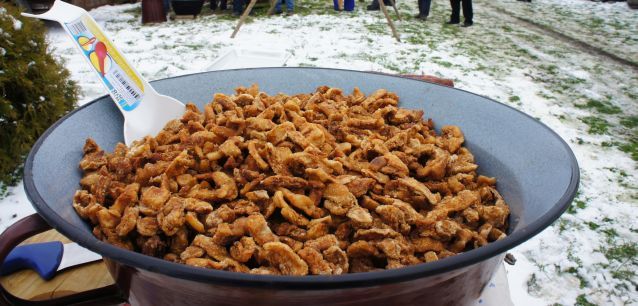
17 Čvarakfest (Karanac, Baranja)
Sometimes the best food festivals are saved for the times when regular tourists are not around. December in Baranja could hardly be described as a tourist hotspot, but for those who find themselves in the region, head to Karanac fofr Cvarakfest. Cvarak is akin to pork scratchings in the UK, a regional speciality which is now exported as far away as Japan. Can there be any better way to warm the cockles than a winter festival celebrating the finest cvarci, washed down with local mulled wine?
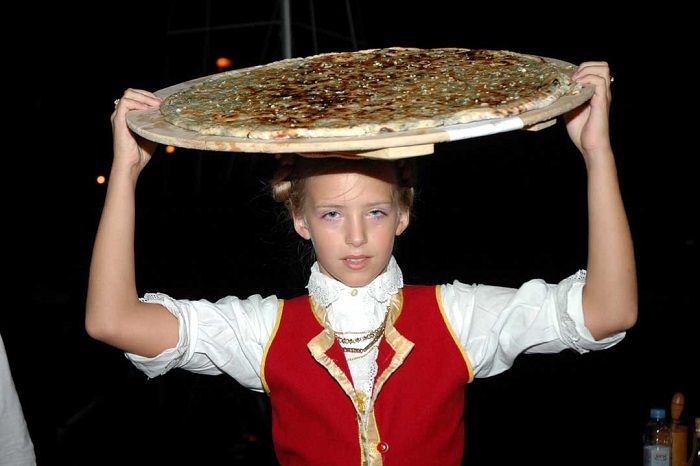
18 Soparnik (Dugi Rat)
Once considered as poor man's food and now culturally protected, Soparnik is a savoury pie with a filling of Swiss chard. Other names are soparnjak, zeljanik or uljenjak. It is the most famous speciality of the dalmatian region Poljica between Split and Omiš. The original season for the dish was the colder time of the year when older, sweeter chard was available. Basically, it is a very simple dish made from common ingredients from the region: Chard with onions and parsley between two layers of simplest dough. Among the numerous local variations there are also sweet ones, for example with nuts, dried fruits or caramel. Soparnik is celebrated every year in a festival in the Dalmatian coastal town of Dugi Rat in either late July or early August.
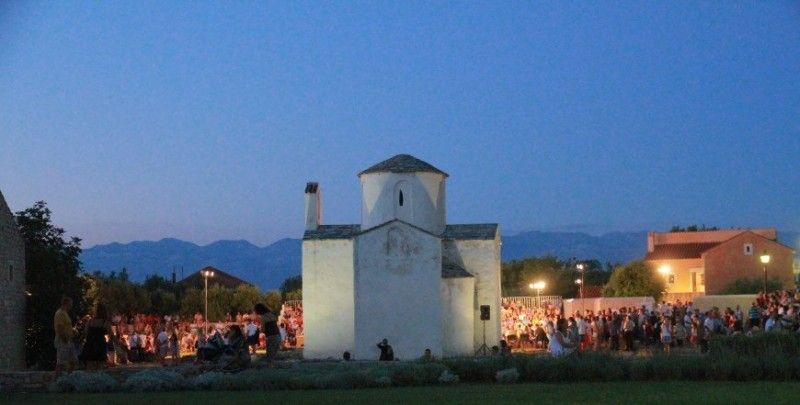
19 Sokolijada (Nin)
If the neck of the pig is your culinary thing, head to Nin. Home to the smallest cathedral in the world, Nin also has its own unique food festival. The tradition of šokol - a dish prepared with dry-cured pork neck in the region of Nin, reaches back to the 17th century. To this day, the tradition is going strong, so much so in fact, that each family is said to have its own recipe for this tasty dish, and it is this variety that has given the rise to the organization of this delectable manifestation. Preparations for the competition begin in January with the treatment of meat. The competition is accompanied by a hot atmosphere resembling that of the biggest sporting events, culminating with the presentation of the Šokol-maker of the Year award and tasting of the food prepared. Strictly guarded from the outside world, the Šokol Fiesta is a unique opportunity to try this autochthonous dish.

20 Truffle Festival (Buzet)
There is perhaps no bigger symbol of the quality of Istrian cuisine than truffles, and it has become one of the most important ingredients in this emerging foodie destination. Truffles are celebrated each year, as the national tourist board explains:
The traditional Festival of Istrian truffles is held from each November in Buzet. Visitors will be able to see, taste and buy truffles and products of truffles, and Istrian homemade products such as prosciutto, cheese, olive oil, wine, honey, jams, marmalades, natural juices, homemade biscuits, homemade pasta, brandies etc. In addition to promotions, tasting and sales, there will be many other activities such as a culinary show Buzet on the plate (caterers from Buzet will prepare meals), parade and dogs show, a small school with professional chef cooking, music, children’s corner, truffle hunt, which is a combination of a mountain bike and trekking race.
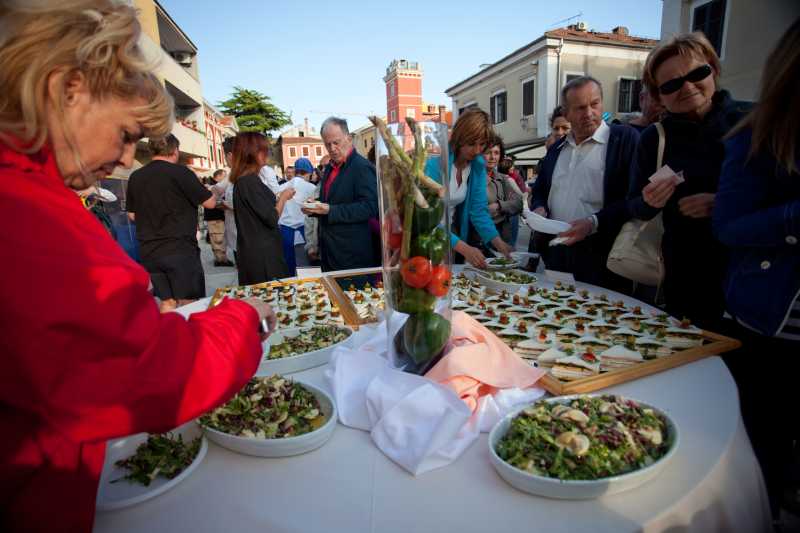
21 Asparagus (Novigrad, Istria)
Whatever you thought about asparagus before, leave it behind when you come to Croatia. Wild asparagus in Croatia has a totally different taste, is more concentrated, bitter and delicious. It is just one of the reasons sane people will disappear into the forest for hours, in search of their own supply. Novigrad is the place to be to celebrate asparagus in late Spring, as part of the Gnam Gnam festival. In the words of the local tourist board:
Asparagus is one of the most appreciated wild plant varieties growing in Istria, picked from mid March to late April. Since it grows in less accessible places, often protected by thorny bushes, its picking requires eye of a hawk, iron will and not being afraid of an occasional scratch. Asparagus is a well-known keeper of health and in terms of nutrition, an excellently balanced foodstuff. We needn't neglect the fact that this wonderful plant has been considered an aphrodisiac from times immemorial due to its high vitamin E content, often spoken of as the fertility vitamin. This one day gourmet event will offer traditional and contemporary asparagus dishes together with local wines, olive oils, pastries and other Istrian products, souvenirs, handicrafts, music animation programm, traditional music and dances, majorette performance etc. We invite you to visit Novigrad during Gnam-Gnam Festival-Asparagusfest and to enjoy all the delicacies.
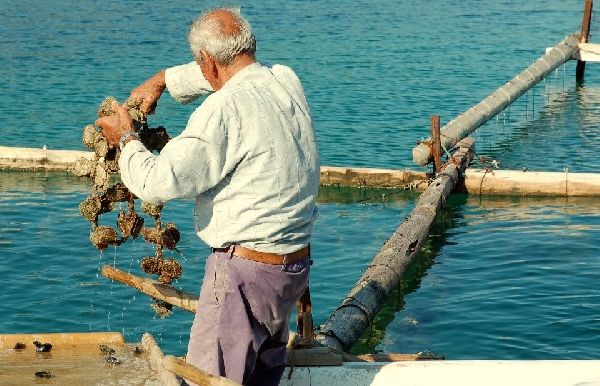
22 Oyster Festival (Ston)
One of the great culinary treasures of the Dalmatian coast are the oysters of Ston. Several restaurants in Ston have specialist menus, and it makes the perfect culinary stop between Split and Dubrovnik. TCN's Ivana Sepak was at this year's festival:
Legends have been told about the supreme taste and excellence of these oysters from Mali Ston bay. The truth is that those precise oysters received many quality acknowledgements and grand prixs all over the world, starting as early as 1936 in London! People working on oyster “farms” in Pelješac (that’s where Ston is located) claim their superiority is due to extremely clean sea water and the influx of fresh water as well. Namely, several oyster cultivators claim that there are underground rivers unraveling into Mali Ston bay and thus creating the perfect conditions for finest oysters. As well, oysters are grown in pair with mussels – oysters are very demanding and mussels are some sort of a filter that cleanse the surrounding waters, aiding that way to clean micro-environment.
There is no middle ground with these shellfish – you either love them or can’t even smell them. The ideal way of eating them is having them freshly pulled from the sea in front of you. Then, if you like, you’re offered some lemon, preferably home grown, some Tabasco sauce if you fancy the spicy taste, and off you go. Be careful, oyster shells should be sealed and crack opened with a special knife in front of you, anything else suggests the lack of freshness. Price of a single oyster is around €1. Needless to say, they are best served raw. Oysters have been known as one of the most popular aphrodisiacs, so be careful with the amounts you consume.
Unlike last year, today we have the perfect weather and hundreds of tourists and locals are expected to flock to Ston for oyster-munching, both today and tomorrow. Together with oysters, some other home grown local food will be presented, as well as impeccable Pelješac wines. Join us in savoring magnificent tastes this weekend in Ston!
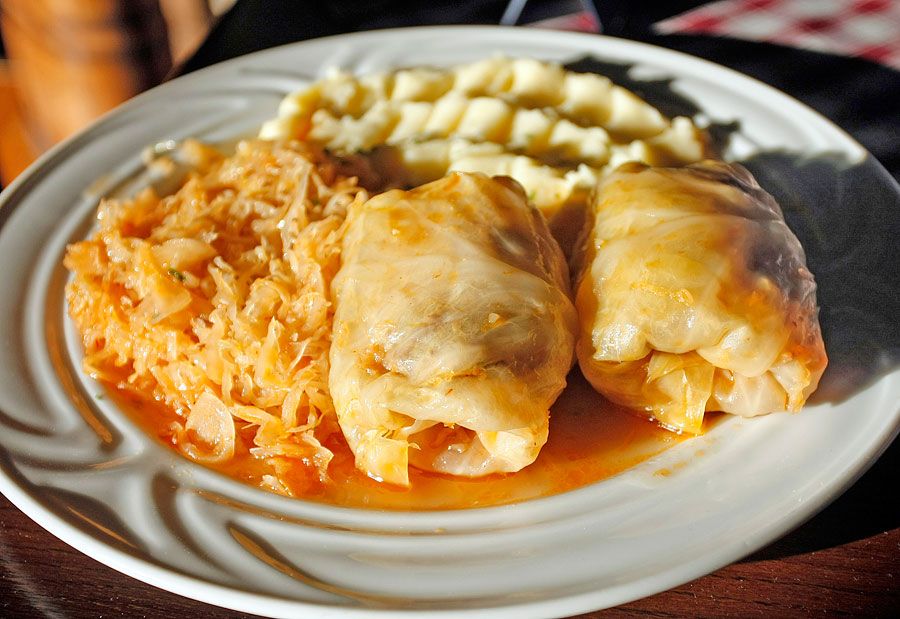
23 Arambasijada (Sinj)
Visiting Sinj in February and a lover of cabbage? A unique chance to try one of Dalmatia's most popular (and culturally protected) arambasi:
According to the excellent Sinj Tourist Board website, the name of the dish is probably derived from the Turkish language - harami, meaning unlawful, and başi, meaning the leader of a group of bandits, also known as the leader of the Alka squires in the Alka Tournament. Cooked on the most important festive occasions such as Easter, Christmas, the Assumption and the Alka Tournament, arambašiversussarma. Here's how to make it, with thanks to the Sinj Tourist Board for the recipe.
Chop very fine one kilogramme of beef. Make a mixture for roux (pešt) of 2 red onions (kapula), 4-5 cloves of garlic, 15 dag smoked bacon and half the tuft of parsley (petrisimul). Add pepper, salt, nutmeg and the grated peel of a lemon to meat and leave it for an hour. Make the rolls wrapping up the mixture of meat and spices in pickled cabbage leaves. Put a beef bone in the common cooking or earthenware pot (bakra) and cover it with finely cut up pickled cabbage. Add a spoon of tomato purée (konšerva). Then place the rolls, arambaši, in the pot and cover them with cut up pickled cabbage. You can also add a few homemade pork sausages (sudžuk), a piece of prosciutto or smoked beef. Then pour in enough water to cover the arambaši and simmer for 2 hours. Serve the arambaši with smoked and cured meat and mashed potatoes. Prepared in this way, and if kept in a cool place, the arambaši will keep over the following week.

24 Štruklijada (Krapina)
Zagorje is a region with a lot of delicacies made by circumstance. Namely, in the time of poverty women from Zagorje made up sweet and salty foods to feed their large families. Different kinds of strukli (strudels or pies) were cheap dishes that can be done with the cheese, fruit, meat, and vegetables. They cooked it, bake it, served as soup, dessert, main course or a small meal. Strukli as a part of everyday cuisine was held on menus and became one of the favorite meals in Zagorje and Zagreb. Mostly, you will find them stuffed with cheese or pumpkin (bucnica). For recipes, check out Just Zagreb. Struklijada takes place each May.
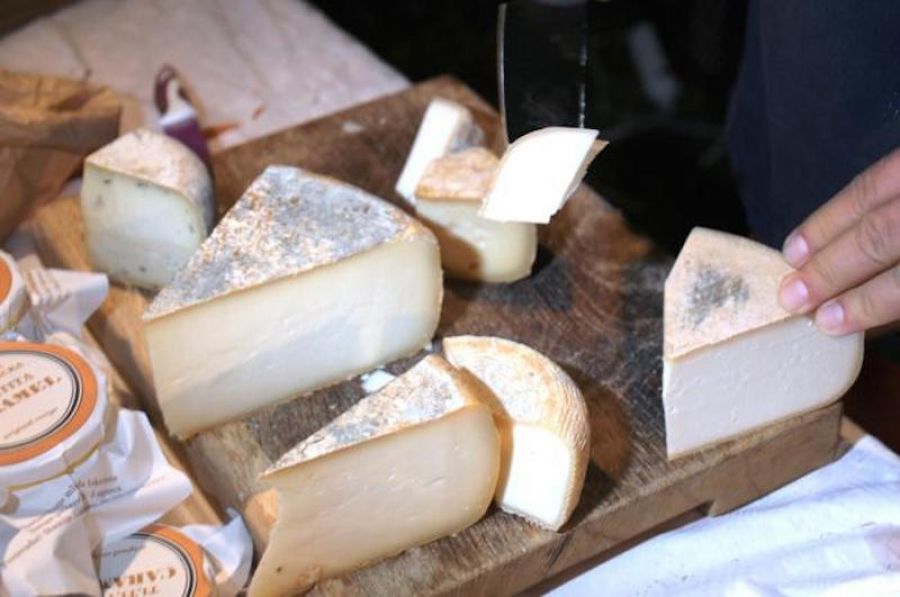
25 Cheese Festival (Svetvincenat, Istria)
Croaita has world class cheese, and of course it would be remiss not to have a festival to celebrate. In the words of the national tourist board:
Presented at the festival will be about 25 cheese producers from all over Croatia. Along with the cheeses in the "Gourmet Zone" in the castle, visitors will be able to taste Istrian wine, ham and olive oil. The entertainment part of the program will take place on the Plaza, where all visitors will be able to enjoy the cheese specialties from the culinary workshop "Local Cuisine". There will also be specialized lectures.
The traditional 'Best Goat" pageant will also be held as part of the Cheese Festival. Visitors will be able to enjoy the small ethno-zoo, while the youngest visitors will have an entertainment corner.
The festival is held in Svetivinčent, a magical place, rich in culture and history, situated in the heart of Istria. Svetvinčenat, Savičenta, San Vincente, three names of the same place, which originate from the name of the Hispanic martyr St. Vincencij and the eponymous abbey around which the town developed.
This medieval town is one of Istria’s gems in which the tourist offer has been introduced recently, in the past few years, through various events taking place at attractive historic sites. Events which are a part of the Istraetnojazz Festival are held in the summer months, in the medieval castle of the Morisin-Grimani family, whilst the nearby magnificent main square and the surrounding areas are the stage for the traditional Festival of Dance and Nonverbal Theater.
In Svetivinčent there is an art group called "Šikuti Machine", which often organizes exhibitions, concerts and performances. Held here in late autumn is the festival of New Wine, at which the best Istrian winemakers present their new wines.
25 festivals. I am sure there are more, and apologies to those who did not make the list. But one thing is for sure - Croatia is a FABULOUS foodie destination, and you should plan your trip with care to catch one of these amazing festivals.


